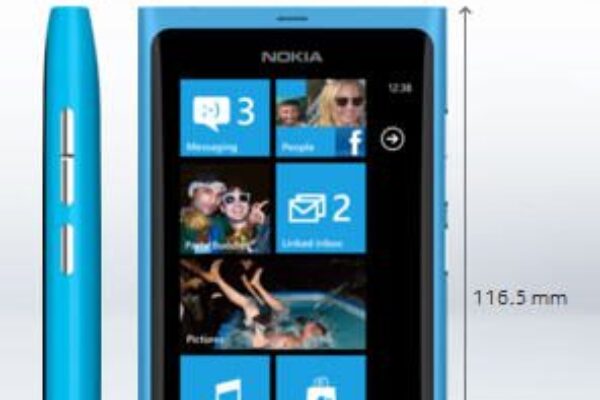
Nokia tries again with new Windows phones
The higher end Lumia 800 with its 3.7-inch AMOLED display, 1.4 GHz processor, 8 megapixel Carl Zeiss camera and 16 GB of embedded memory is targeted to compete with the likes of Apple’s iPhone 4S and Samsung’s Galaxy S II, while the Lumia 710 ith a 5 megapixel camera and 8GB of embedded memory is aimed more at the mid-tier segment. Both phones boast a 1450 mAh battery.

“This is a slim and sleek, well designed phone, featuring a best in class camera and it has some strong key selling points,” said IDC’s Francisco Jeronimo of the Lumia 800, though he admitted the phone may have trouble competing in a market where Android and iOS still dominate.
The Lumia 710, he said, was more of a dark horse in that it had surprised the mid-tier segment with a device it wasn’t expecting until the second quarter of 2012.
“This is the most affordable 1.4 GHz processor device, a mid price-tier handset with high-end specs,” he said.
Jeronimo said he felt Nokia had “come a long way” over the past year, noting that Stephen Elop’s reign as CEO and the firm’s "180-degrees" shift in strategy seemed to be paying off.
“Stephen Elop stepped in as CEO of the biggest phone maker in the world, defined a new strategy and a new paradigm for Nokia, executed it and over exceeded expectations by delivering not only one, but two new Windows devices,” he said adding “Nokia seems to have now what lacked for years, speed to adjust to the market’s pace.”
Not all analysts were as impressed as Jeronimo, however, with Jack Gold of Gold Associates positing that Nokia had missed an opportunity at the event and was still not showing the level of revitalization needed to turn the company around.
“I’m left with many questions after the announcements. How do the new devices fit into a diverse environment in an enterprise setting? Where are the enterprise tools to deploy, activate secure and manage them? What is the Nokia Value Add on top of plane Windows Phone? What did they do to enhance the Windows Phone platform beyond what Microsoft offers? Nokia seemed to show once again that they understand how to make appealing hardware, but fell short in service offerings that could differentiate them in the market, especially with the important business user,” said Gold.
“Samsung makes a nice Windows phone, as does HTC. Why would a consumer choose a Nokia device?” he added.
Ironically, Jeronimo counters that the likes of Samsung and HTC may be just what Nokia needs to help drive sales, by raising the profile of the Windows operating system, which currently only holds 2 percent of the smartphone market.
IDC estimates that as a result of well established brands like Samsung, HTC and LG pushing out devices with a Windows Phone operating system, Microsoft should see its mobile software grow to take a market share of 11 percent by 2012 and possibly become the second biggest smartphone operating system by 2015, with 20 percent market share, behind Android and ahead of iOS.
Those predictions, however, would likely hinge on Nokia delivering devices into the U.S. market. The Lumia 800 and 710 will apparently only be available in selected markets across Europe, with the firm holding off on a U.S. launch until early next year, once LTE stabilizes.
Microsoft’s restrictive policy on changing the operating system’s user interface could also make it difficult for phone makers to differentiate their offerings based on Windows Phone, which could make it a hard sell to consumers.
“Nokia will need to leverage its hardware expertise, but the differentiation will come from their unique services that other vendors cannot easily match,” said Jeronimo. Gold, however, argues that Nokia has still not shown how it adds value to the Microsoft standard OS and that launching at premium pricing level (420 euros, or about $599 before subsidies) is risky in a market where the iPhone 4S costs the same.
“Nokia is competing against the market leaders at about the same pricing level. There is no advantage taken by Nokia in trying to get back into the marketplace at a reasonable price with a premium product,” Gold said.
Indeed, Nokia has been losing significant share in the smartphone segment since 2007 and as Jeronimo notes, “It will take a lot more than just a couple of phones to bring Nokia back.”
The new devices launched today, however, may be an “excellent first step” in Jeronimo’s opinion and more significantly, a sign that Nokia can “change its culture, readapt and refocus on growth.”
 If you enjoyed this article, you will like the following ones: don't miss them by subscribing to :
eeNews on Google News
If you enjoyed this article, you will like the following ones: don't miss them by subscribing to :
eeNews on Google News



